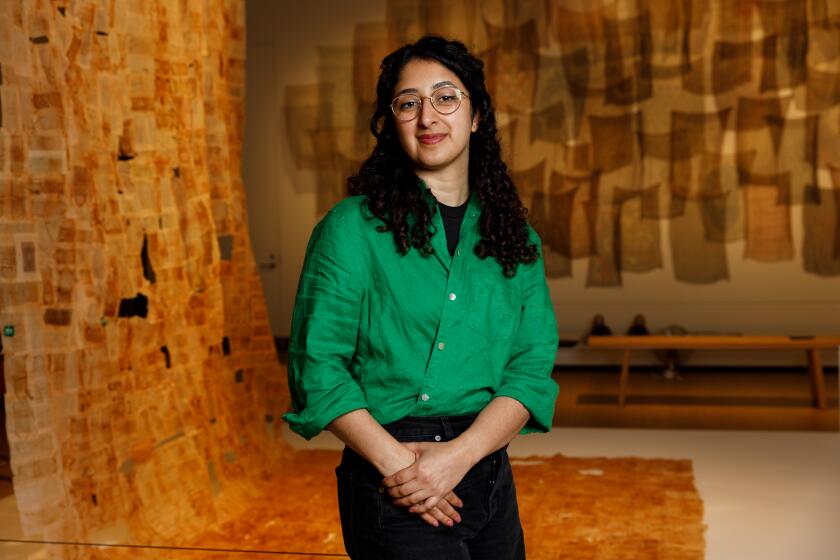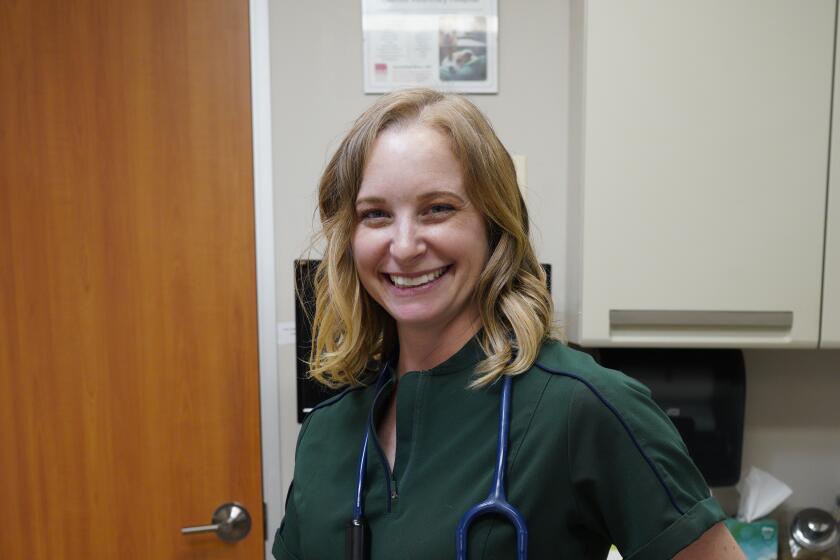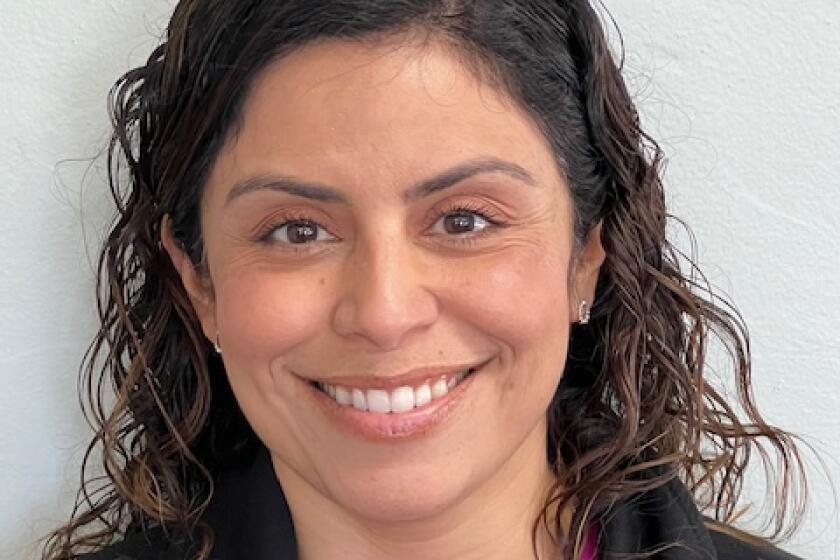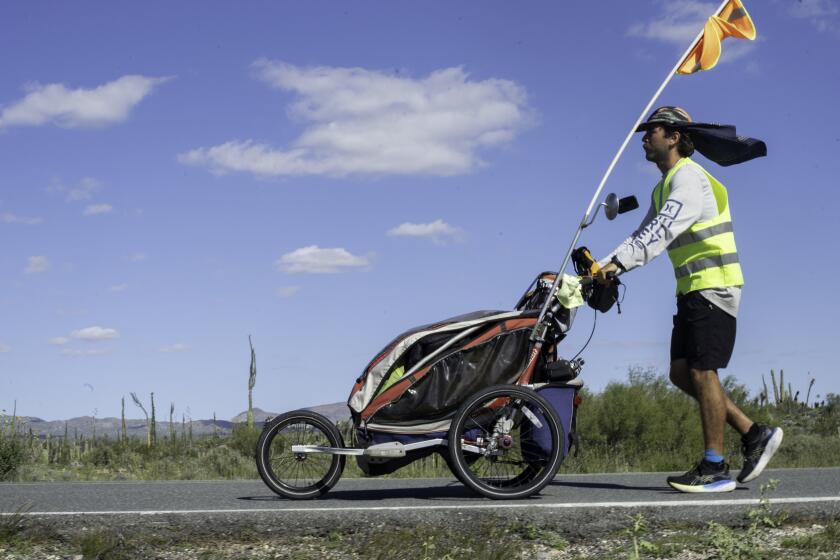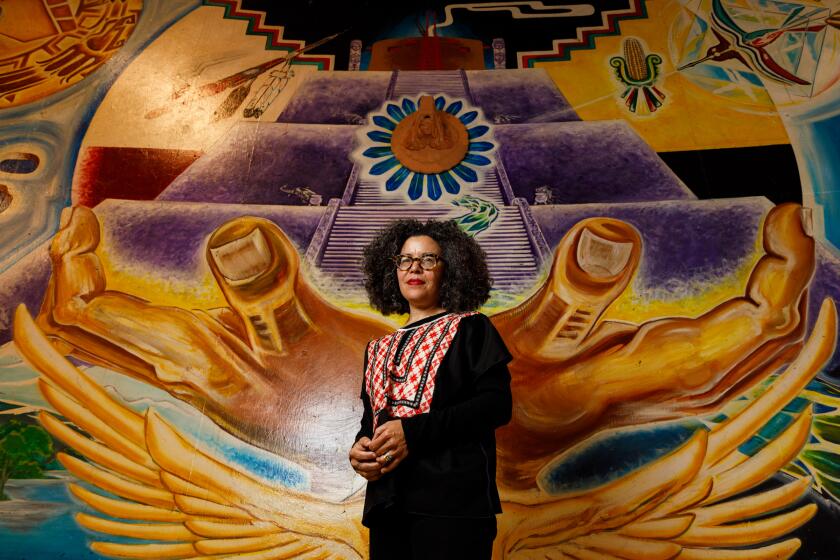MOPA program shows how photography can help engage adults with Alzheimer’s and dementia
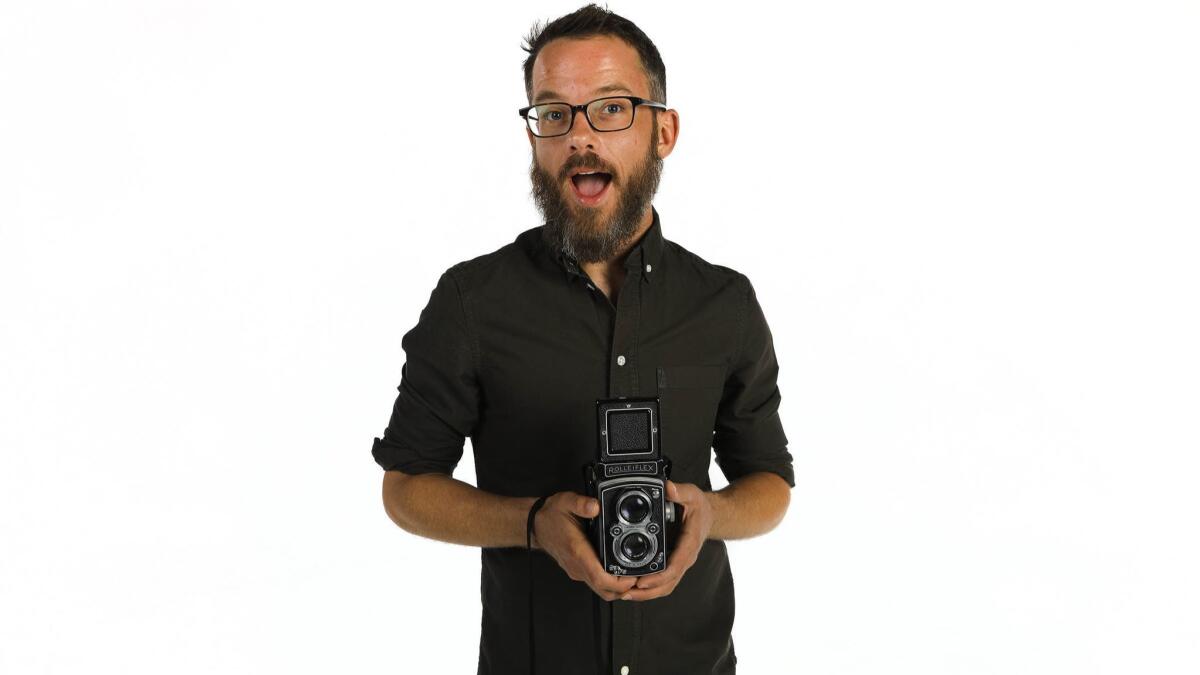
When Kevin Linde moved to San Diego in 2012, the Museum of Photographic Arts was one of the first places he visited, and he was excited to find a place dedicated to the art of photography in this way. After applying for and getting an internship with the museum, he’s now the adult programs manager, implementing educational programs for older adults and the general public.
“Photography has been a thread woven through much of my life, and I’ve always believed that to better understand photography in its many forms, is to better understand ourselves and the many ways in which we see the world,” he says of his decision to work with the museum. Part of his work also involves workshops for the public, outreach tours and the SEPIA (Seniors Exploring Photography, Identity and Appreciation) program.
Linde, 32, lives in Logan Heights with his partner, James, and their cat, Chasca. He took some time to talk about his work at the museum and how art and photography can help older adults and those who have Alzheimer’s and dementia.
Q: Why did you want to work with the Museum of Photographic Arts?
A: When I learned of MOPA’s mission to inspire, educate and engage the broadest possible audience with photography and film, I knew I had found an exciting organization working toward a very important set of goals as a center for visual literacy, especially in today’s increasingly connected and visual world.
Q: Tell us about the SEPIA program.
A: The SEPIA program began in 2012 as a pilot to explore how to best serve, specifically, older adults and seniors through engaging, relevant and accessible programming. Historically, museums have often taken for granted the visitorship by older adults and seniors, and often a lot of attention and resources go toward youth educational programs. However, we know from research that older adults and seniors can have just as much, if not more, of a barrier in accessing programs and engaging with content at a museum due to a range of factors, from physical mobility to cognitive ability and socioeconomic circumstances. The program launched to provide free talks, courses and tours through a network of partner sites around the county, and specifically tailored for seniors across a range of abilities, with the goal of having a positive impact on the well-being of participants by learning something new and meeting others with shared interests.
Q: What do you go over and teach in the digital photography courses for seniors?
A: Over the years since the start of the program, we’ve adapted the four-week courses to go beyond basic digital photography, inviting seniors to explore everything from nature photography on location, to how to sequence and print their very own photo book. However, across all our courses we specifically strive to develop all participants’ visual literacy; that is, how do we “read” and talk about photographs, how do we create more effective messages in our own photographs, and how do we use images to communicate something about ourselves? While that may sound complicated, it’s actually so much fun to dive into something like contemporary photography with older adults, hear their reactions and chat through how they could even dabble in it themselves by simply thinking of things (or seeing things) from a different perspective.
What I love about Logan Heights ...
There are so many things to love about Logan Heights, but it’s really the connection to San Diego’s diverse history that’s around every corner.
Q: Why is it important to promote art appreciation among seniors?
A: Research shows that arts engagement, specifically for the older adult and senior demographic, has a number of benefits to the participant, from decreasing social isolation to improving overall well-being by providing an opportunity to be creative in a supportive environment. It also helps to build new skills and vocabulary to talk about, and experiment with, new ways of expressing oneself through images.
Q: You also work with seniors who have Alzheimer’s and dementia?
A: Our work with older adults and seniors involves providing opportunities for an in-the-moment experience, where we can explore a photograph, an artist’s work or a technique, without having to rely on short-term memory and retention of details or facts. We partner with organizations in San Diego, from the Shiley-Marcos Alzheimer’s Disease Research Center at UC San Diego, to the Alzheimer’s Association of San Diego and Imperial Counties, to provide programs for those with memory loss and their caregivers to attend together.
Q: How are art and photography helpful or beneficial to people with Alzheimer’s or dementia?
A: Photography has this unique place in wider culture where it’s one of the most familiar forms of capturing a moment, and also something many, if not most, of us use regularly in our lives. That familiarity is a great entry point for people to start talking about what they’re seeing and what they’re noticing in an image. This works well with a population that may not be able to recall details or facts, but can actively look at an image and talk about what it may be picturing. It also is something concrete in front of us that we can reference and relate to, rather than an abstract concept or idea, which would be harder for someone experiencing memory loss. It’s also a record of the past in many ways, and so a collection that spans the history of photography, from the early 1800s to now, is an incredible resource to use these images as a springboard for reminiscing and leveraging long-term memory in individuals where short-term memory may be difficult.
Q: What’s been rewarding about this work?
A: Seeing a positive impact in the lives of participants and those we reach through the museum’s programs, from simply learning a new skill to something more complex like coming to see photography, and their own abilities, in a new way.
Q: What has it taught you about yourself?
A: It’s taught me that we’re all able to learn at absolutely any stage and age in life.
Q: What is the best advice you’ve ever received?
A: The best advice I’ve ever received is to never stop learning. Learning isn’t something that’s done only while young and in school, or only while enrolled in a degree or certificate program. We all have the opportunity each day to learn something new, and I think that’s one of the most exciting things about life.
Q: What is one thing people would be surprised to find out about you?
A: I love to knit! It seems pretty unrelated to photography, but it’s a passion of mine that’s relaxing, really tactile and hands-on, and in a bigger way I love how a simple pattern of numbers and letters can in turn create something we can use or wear.
Q: Describe your ideal San Diego weekend.
A: My ideal weekend in San Diego would be to get out and enjoy the outdoors, from a walk or bike ride through my neighborhood Logan Heights, or simply digging around and working in the small vegetable garden we keep at home.
Email: lisa.deaderick@sduniontribune.com
Twitter: @lisadeaderick
Get Essential San Diego, weekday mornings
Get top headlines from the Union-Tribune in your inbox weekday mornings, including top news, local, sports, business, entertainment and opinion.
You may occasionally receive promotional content from the San Diego Union-Tribune.




